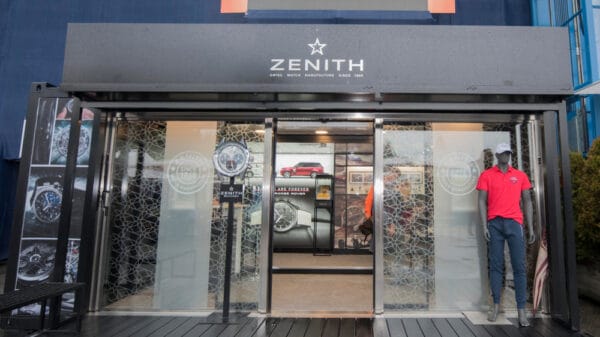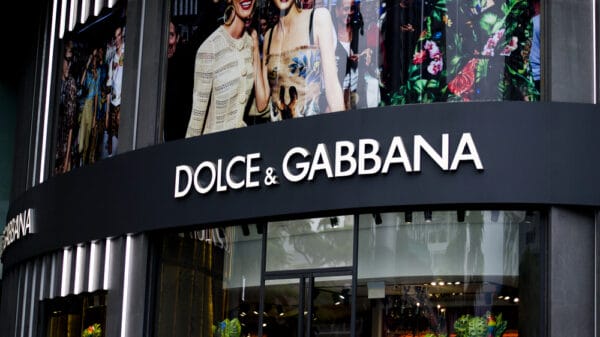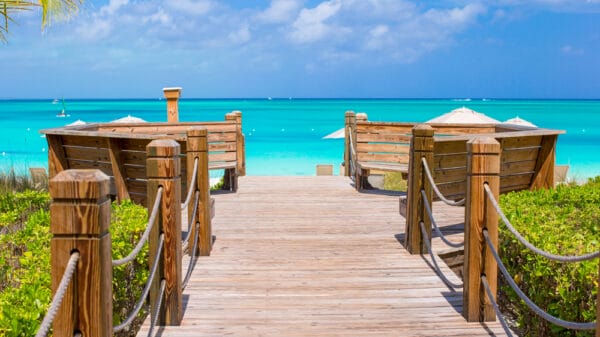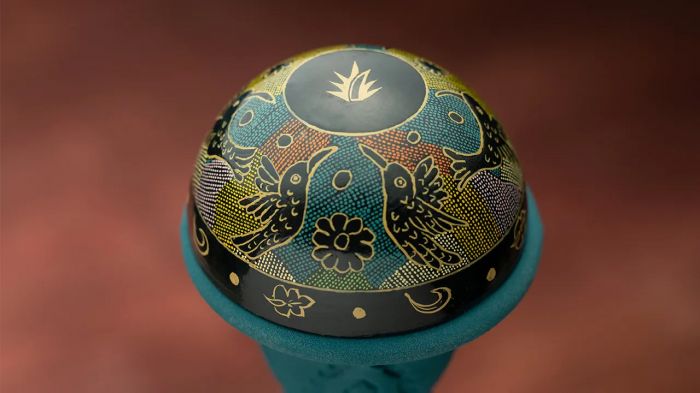The root has always been, through symbolism and practicality, through native cultures agriculture handbooks, the beginning of everything. If the roots are good, the tree, the bush, the flower will grow. If not, then not. The roots begin life, and are almost always, in native cultures, the symbols of stability and heritage. Having roots in a community means the person is firmly established. Having roots in a place usually implies there are blood relatives living in that area. In religious and cultural symbolism, roots communicate a sense of stability and legacy.
Roots absorb water and minerals, anchor plants to the ground, and store food. But in Mexico, the root of two cousin plants the maguey and the agave, have allowed both a new luxury and legacy dimension of Mexican culture to thrive. The maguey is actually a member of the agave family – a cousin to the Tequila blue agave.
Clase Azul is the first high-end Mexican brand to bring this spirit, born of deep Mexican root systems, to the many who may have experienced Tequila and Mezcal in somewhat un-memorable circumstances. There are many who drank Tequila in high school to the 1958 tune Tequila by The Champs, or Tequila Sunrise by the Eagles.
But now, the mission of Clase Azul is to change the stereotype, by creating a greater luster to this rooted spirit, through a better, organic, slow processing dimension that has not only a purified taste, but created a deeper taste spirit of culture and tradition to the spirits of agave.
Clase Azul was founded by CEO Arturo Lomeli, who was later joined by childhood friend, President Juan Sanchez to build the brand, whose mission and vision were and are to “share the historic, cultured, and luxury aspects of Mexico with the world.”
To those ends, Clase Azul uses the purest ingredients and is now recognized for its slow process, producing flavor profiles of each Tequila and Mezcal. In addition, are the memorable hand-crafted decanters made by Mexican artisans. The Clase Azul Spirits are Clase Azul Plata, Clase Azul Reposado, Clase Azul Añejo, Clase Azul Ultra Añejo, and two Mezcals: Clase Azul Mezcal Durango and Clase Azul Mezcal Guerrero, each with a specific flavor profile and identity, just launched on April 1, 2021 in the U.S. and Mexico.
In addition, Clase Azul now provides a new culinary experience called A Taste Of Culture at the Shoppes at Palmilla in Cabo San Lucas. Each participant experiences the history and mystery of Tequilas and Mezcals with a three-course exceptional, native cuisine created by master Chef Gilberto Covarrubios. The inspiration of this experience is in learning more about the roots of the iconic Mexican plant, the agave and all the Tequilas and Mezcals it produces.
The Clase Azul Tequilas originated in the small Mexican town of Santa Maria Canchesda. The native artisans who handcraft each decanter dedicate their time and heart in the sculpting, and hand-painting of each piece. Clase Azul Tequila is created using 100% organic Tequilana Weber Blue Agaves – the only agave of over 200 varieties— that produces Tequila.
Once harvested, the Agaves are cooked in old brick ovens for 72 hours. Once cooked, the pinas or, roots, are crushed to extract the juices, which are then mixed with a special proprietary yeast. The fermentation process takes place, and finally, the alcohol is distilled twice to ensure the highest quality spirit. The ultra-premium line of Tequila is produced in one of the highest points in Los Altos, or the highlands – in the town of Jesus Maria, in the region of Jalisco – that results in a very unique flavor profile.
With Clase Azul Mezcal Durango, the process involves the traditional Palenque production process.
This video honors the 15th anniversary, Clase Azul Spirits tells a story that involves four unique products of the world, all with Mexican designation: Amber, Olinala, Talavera and Tequila.
For this type of Mezcal, the Cenizo Agave is used. It is from Durango that takes between 12 and 15 years to mature before it blooms, and the roots can be harvested to produce the Mezcal spirit. Slow underground roasting of the agave root hearts using firewood and volcanic rock cook the and generate enough heat to give the Mezcal a smoky quality. It produces notes of peanut, brown sugar, honey, ash, wood, and chocolate. Next comes artisanal milling made by hand using only an axe. Then, the fermentation is created using stone piles covered with red oak adding ripened fruit notes. Finally, there is a double distillation process, using an alembic copper still, also known as El Viejo (“the old man”). To many, the result is called, “El elixir de los dioses” –the elixir of the gods.
The other Clase Azul Mezcal is Mezcal Guerrero. This is made from 100 percent Agave Papalote, also known as Agave cupreata, specific to the Guerrero region of Mexico. In the mountainous region of Guerrero, this agave plant grows wild and completely natural by seed propagation. Papalote Agave can take up to 15 years to fully mature and only the best agaves are cooked over the course of several days in a pit oven using volcanic rock and firewood from the Guamuchil tree, according to a statement from Clase Azul Spirits.
Yet, no matter how exceptional the Clase Azul spirit identities are, the designs on the decanters are equally as memorable. Decanters that hold this elixir are handcrafted, with no two alike.
Mexican artisans and their artistic movement are at the forefront of the Clase Azul culture, and through their charitable arm – Fundación Con Causa Azul –they support artisanal communities also. Benefits include equipment for their studios, raw materials needed to produce their art, the necessary planning needed to exhibit their art, and training in the marketing of their creations.
Clase Azul is certain that by supporting these artisans, and creating A Taste Of Culture Experiences, they aid in enlivening the artisanal, colorful true Mexican culture, and with that, the deeper Agave and Maguay root systems have the chance to flourish as well.
Image Source: Just Luxe




































